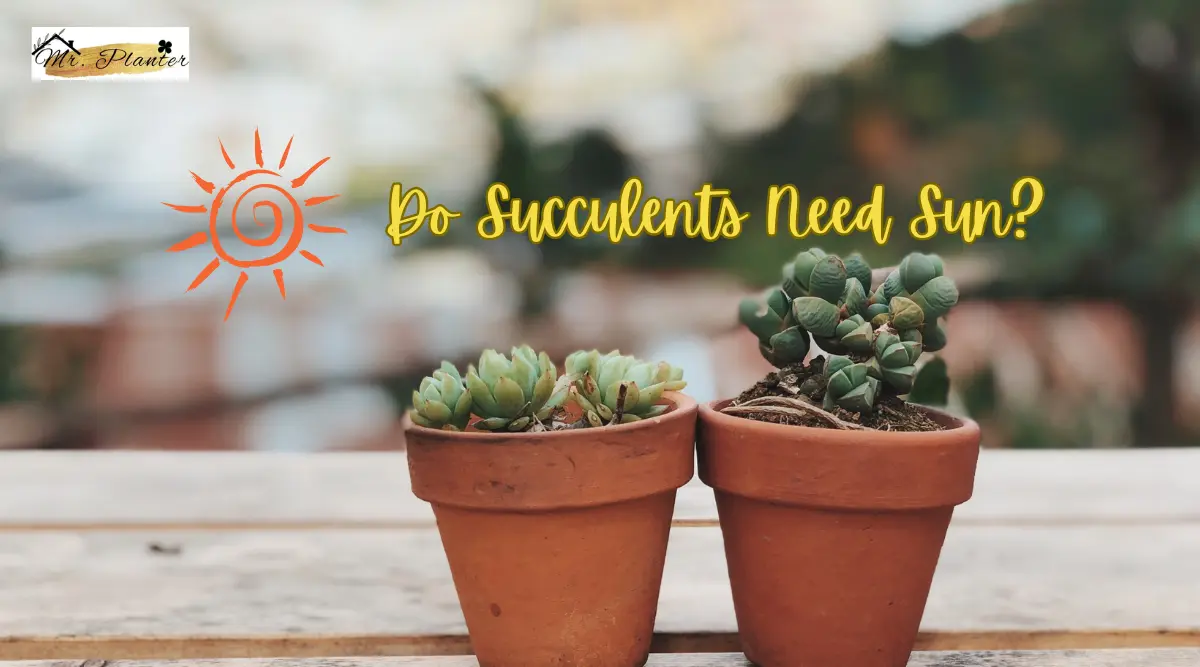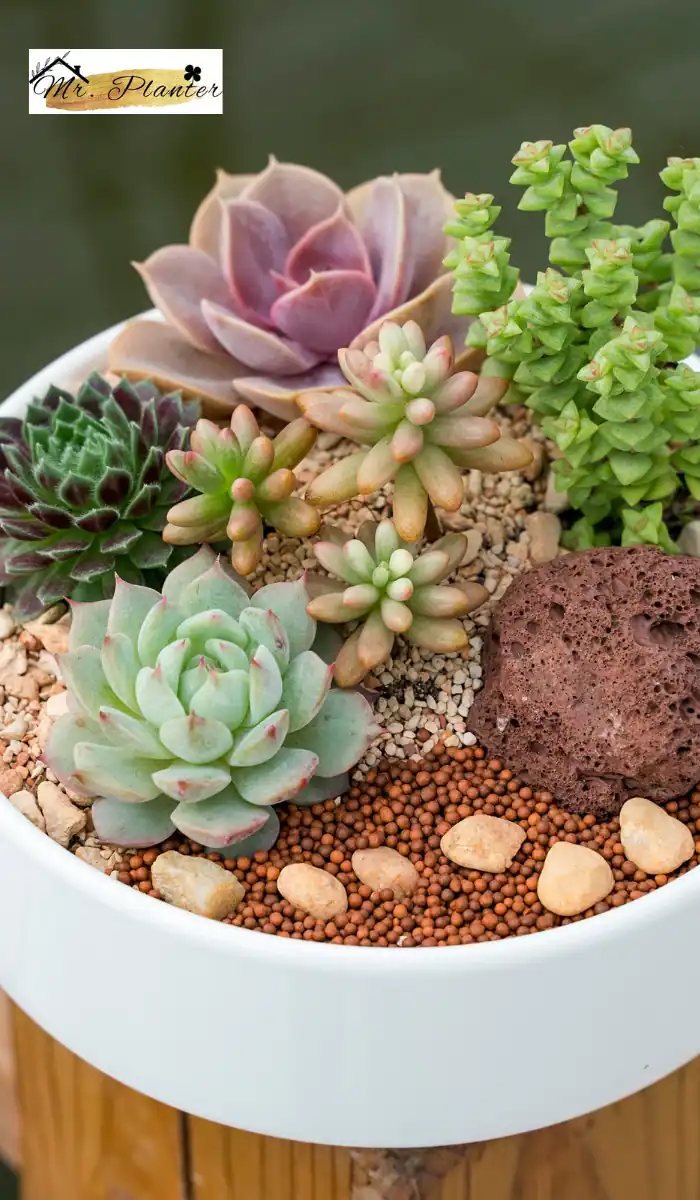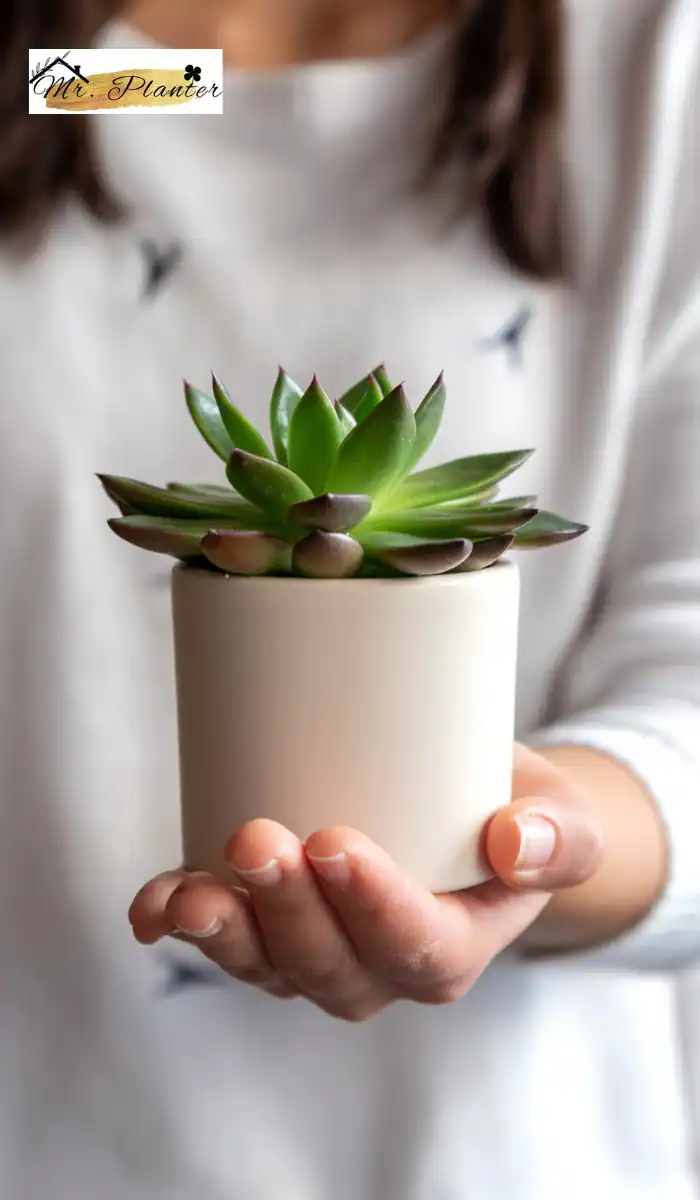If you’re a succulent lover, you know that these plants can be a beautiful addition to any home or garden.
But, do succulents need sun? The answer is yes, succulents need sun to grow healthy and happy. Sunlight is essential for succulents to produce their beautiful colors and avoid etiolation, which is when the plants stretch to seek more light, producing weak stems and poor growth.
The amount of sunlight that succulents need varies depending on the type of succulent. In general, succulents need at least 4-6 hours of sunlight a day to keep them happy. Succulents that do not receive enough sunlight will exhibit problems such as elongation or etiolation. On the other hand, too much sunlight can cause sunburn and other issues.

Indoor vs. outdoor succulent care also plays a role in sunlight requirements. Succulents that are grown indoors may not receive as much sunlight as those grown outdoors, so it’s important to find a sunny spot in your home for your succulent to thrive.
If you’re struggling with sunlight challenges, there are ways to help your succulent grow healthy and happy. In this article, we’ll cover everything you need to know about succulents and sunlight, from how much sunlight they need to best practices for succulent care.
Key Takeaways
- Succulents need at least 4-6 hours of sunlight a day to grow healthy and happy.
- Too much sunlight can cause sunburn and other issues, while too little sunlight can cause elongation or etiolation.
- Indoor vs. outdoor succulent care also plays a role in sunlight requirements, and there are ways to help your succulent grow healthy and happy even in challenging sunlight conditions.
Do Succulents Need Sun?
Succulents do need sun, but they can also grow without it if they have another light source. However, they will be happier and healthier if they get enough sunlight that suits their specific needs.
Without enough sunlight, succulents may exhibit problems such as elongation or etiolation, where the plants stretch to seek more light. This process produces weak stems and poor growth. Succulents that do not receive enough sunlight may also lose their vibrant colors and become dull and faded.
However, it is important to note that not all succulents have the same sunlight requirements. Some succulents, such as Haworthias and Gasterias, can tolerate less direct sunlight and prefer bright, indirect light. On the other hand, other succulents, such as Echeverias and Sedums, require more direct sunlight to thrive.
When growing succulents outdoors, it’s important to place them in a location where they can receive enough sunlight. If you live in an area with hot, intense sunlight, you may want to provide some shade for your succulents during the hottest part of the day to prevent sunburn.
How Much Sunlight Does Succulents Need?
Succulents are known for their ability to thrive in dry, arid environments, but that doesn’t mean they can survive without sunlight. In fact, succulents need sunlight to grow and stay healthy, just like any other plant. But how much sunlight do succulents actually need?
As a general rule, most succulents need around 6-8 hours of direct or indirect sunlight per day. However, the exact amount of sunlight your succulent needs can vary depending on the species.

Some succulents, like cacti, can tolerate more sunlight and can even thrive in full sun, while others prefer less direct sunlight and will do better in a partially shaded area.
It’s important to note that succulents can get sunburned if they receive too much direct sunlight, especially during the hottest part of the day.
Signs of sunburn include brown or black spots on the leaves or an overall yellowing of the plant. If you notice these signs, it’s best to move your succulent to a shadier spot or provide some protection from the sun, like a sheer curtain or shade cloth.
On the other hand, if your succulent isn’t getting enough sunlight, it may become stretched out and leggy as it tries to reach for more light. This is known as etiolation and can cause your plant to become weak and more susceptible to disease.
If you notice your succulent is starting to stretch out, it’s a sign that it needs more sunlight and you should move it to a brighter spot.
Do Succulents Like Full Sun or Shade?
Succulents are known for their hardiness and ability to grow in a variety of conditions. However, when it comes to sunlight, succulents have specific preferences that you should be aware of to ensure their optimal growth and health.
Full Sun
Most succulents love sunlight and need at least 6 hours of direct sunlight per day to grow well. Full sun exposure helps succulents grow healthy, produce their beautiful colors, and avoid etiolation. However, too much direct sunlight can also be harmful to your succulents, causing sunburns and drying out the leaves.
It’s essential to understand that not all succulents are the same. Some succulents can tolerate more sun than others. For example, Echeveria, Sedum, and Crassula are some of the most sun-loving succulents and can handle full sun exposure for extended periods. On the other hand, some succulents, such as Haworthia and Gasteria, prefer partial shade and cannot tolerate direct sunlight for long.
Partial Shade
If you live in an area with intense sunlight or have succulents that cannot tolerate full sun exposure, partial shade is an excellent option. Succulents that prefer partial shade can handle a few hours of direct sunlight but need protection from the hot afternoon sun.
Some succulents that prefer partial shade include Aloe Vera, Sansevieria, and Snake Plant. These succulents can grow well in bright, indirect sunlight and can even thrive in low-light conditions.
Can Succulents Live in a Room with No Sunlight?
Succulents are known for their ability to tolerate low-light conditions, making them a popular choice for indoor plants. However, can succulents live in a room with no sunlight at all?
While succulents can survive in low-light environments, they still need some form of light to thrive. Without any light at all, succulents will eventually begin to decline and die.
If you want to keep succulents in a room with no sunlight, there are a few things you can do to help them survive. One option is to use grow lights, which are specially designed to provide the spectrum of light that plants need to grow. You can set up a grow light system in your room to provide your succulents with the light they need to thrive.
Another option is to choose succulent varieties that are more tolerant of low-light conditions.
Some succulents, such as snake plants and ZZ plants, are known for their ability to grow in low-light environments. These plants can be a good choice if you want to keep succulents in a room with no sunlight.
However, even low-light tolerant succulents will eventually begin to decline if they don’t receive any light at all. If you want your succulents to thrive, it’s important to provide them with some form of light, whether it’s natural or artificial.
With the right care, you can keep your succulents healthy and happy even in a room with no sunlight.
The Role of Sunlight for Succulents
Succulents are known for their unique ability to store water in their leaves, stems, or roots. This allows them to survive in hot and dry environments where other plants may not be able to thrive. However, to grow healthy and happy, succulents need sunlight.
Sunlight plays a crucial role in the growth and development of succulents. It helps them produce their beautiful colors and avoid etiolation.
Etiolation is a process where succulents stretch out and become weak due to a lack of sunlight. Without sunlight, succulents will turn pale, look unhealthy, and start the process of etiolation.
Most succulents prefer to be in full, direct sun. Direct sunlight is the easiest way to reveal their “true colors”, also known as “sun blush”. However, not all succulents require direct sunlight all day long. Some succulents can tolerate partial shade or indirect sunlight, while others require full sun exposure.
It’s important to understand the lighting needs of your specific succulent species. Some succulents can handle more sun exposure than others.
For example, cacti are known for their ability to thrive in the desert heat and full sun exposure. On the other hand, some succulents such as Haworthias and Gasterias prefer to be in partial shade or indirect sunlight.
Sunlight Requirements for Succulents
Succulents are known for their ability to store water in their leaves, stems, or roots. This allows them to survive in hot and dry environments where other plants may not be able to thrive.
However, succulents still need sunlight to grow and thrive. In this section, we will discuss the sunlight requirements for succulents.
Light Intensity
Succulents require bright, indirect sunlight for optimal growth. Direct sunlight can burn their leaves, causing damage or death to the plant. On the other hand, insufficient light can cause succulents to stretch out and become leggy, a process known as etiolation.
To ensure that your succulents receive the right amount of light, place them near a window that receives bright, indirect sunlight for at least six hours a day. If you’re growing succulents indoors, you may need to supplement their light with artificial grow lights.
Sun Exposure
Different types of succulents have different sun exposure requirements. Some succulents, such as desert cacti, echeveria, sempervivum, jade, aloe, aeonium, senecio, agave, and sedum, require direct sunlight for optimal growth. Other succulents, such as hoya, can tolerate lower light levels.
It’s important to note that direct sunlight indoors is not as strong as direct sunlight outdoors, since it is still being filtered through a window. If you’re growing succulents outdoors, be sure to acclimate them gradually to direct sunlight to avoid sunburn.
Indoor vs. Outdoor Succulent Care
When it comes to succulent care, there are a few key differences between indoor and outdoor environments that you should be aware of. Here are some tips to help you keep your succulents happy and healthy, whether they’re inside or outside.

Light
One of the most important factors in succulent care is light. Succulents need plenty of bright, direct sunlight to thrive. However, the amount of light they need can vary depending on whether they’re indoors or outdoors.
Indoor succulents typically need more light than outdoor succulents. This is because the light indoors is often filtered through windows, which can reduce its intensity. To make up for this, you may need to place your indoor succulents in a south-facing window or use grow lights to supplement their light intake.
Outdoor succulents, on the other hand, can usually handle more direct sunlight. However, it’s important to make sure they’re not getting too much sun, especially during the hottest parts of the day.
If you notice your outdoor succulents starting to look burned or wilted, they may be getting too much sun and you should move them to a shadier spot.
Temperature
Succulents are generally hardy plants that can tolerate a wide range of temperatures. However, indoor and outdoor environments can have different temperature fluctuations that can affect your plants.
Indoor succulents are usually kept in a temperature-controlled environment, which can be beneficial for their growth. However, it’s important to make sure they’re not placed near drafty windows or air conditioning vents, which can cause temperature fluctuations that can stress your plants.
Outdoor succulents can handle a wider range of temperatures, but extreme heat or cold can still be damaging. If you live in an area with hot summers or cold winters, you may need to take extra precautions to protect your outdoor succulents.
For example, you may need to move them indoors during extreme weather or cover them with blankets or tarps to insulate them.
Watering
Succulents are known for their ability to store water in their leaves, which allows them to survive in arid environments. However, the amount of water they need can vary depending on whether they’re indoors or outdoors.
Indoor succulents may need to be watered more frequently than outdoor succulents. This is because indoor environments are often drier than outdoor environments, which can cause your plants to dry out more quickly. To prevent this, you may need to water your indoor succulents every 7-10 days, depending on the humidity levels in your home.
Outdoor succulents, on the other hand, may only need to be watered once a month or less. This is because outdoor environments are usually more humid than indoor environments, which can help your plants retain moisture.
However, it’s important to make sure your outdoor succulents are not overwatered, as this can cause root rot and other problems.
Dealing with Sunlight Challenges
If you’re growing succulents, you need to provide them with enough sunlight to thrive. However, too much or too little sunlight can cause problems for your plants. Here are some common sunlight challenges and how to deal with them.
Sunburn
Succulents can get sunburned if they are exposed to too much direct sunlight. This can cause the leaves to turn brown or white and become dry and crispy.
To prevent sunburn, you should gradually introduce your succulents to direct sunlight and avoid exposing them to the hot midday sun. You can also provide them with some shade during the hottest parts of the day.
If your succulents do get sunburned, you can trim off the damaged leaves and move the plant to a shadier location. You can also provide them with some extra water to help them recover.
Leggy Growth
If your succulents aren’t getting enough sunlight, they may start to grow tall and leggy. This happens because the plant is trying to reach for more light. The stems become elongated and the leaves become spaced out. This is not an ideal growth pattern for succulents.
To prevent leggy growth, you should make sure your succulents are getting enough direct sunlight. If they are not, you can move them to a sunnier location or provide them with artificial light. You can also pinch off the top of the stem to encourage the plant to grow bushier.
Signs of Sunlight-Related Issues in Succulents
Succulents are known for their love of sunlight, but too much of a good thing can be harmful. Overexposure to sunlight can cause various issues in succulents. Here are some signs to look out for:
- Discoloration: When succulents are exposed to too much sunlight, they can develop brown, black, or red patches on their leaves. This discoloration is commonly referred to as sunburn or sunscald. If caught soon enough, the plant will regrow and shed the damaged tissue.
- Wilting: Succulents that are exposed to too much sunlight can wilt and become limp. This is because the excessive heat causes the plant to lose water faster than it can absorb it.
- Stunted Growth: If your succulent isn’t growing as it should, it could be due to too much sunlight. Succulents that are exposed to too much sunlight can become stressed and their growth can become stunted.
- Bleaching: Succulents that are exposed to too much sunlight can become bleached. This is because the excessive heat causes the plant to lose its color.
To prevent these issues, it’s important to provide your succulents with the right amount of sunlight. While succulents love sunlight, they also need some shade to protect them from the harsh rays of the sun. Be sure to place your succulents in a spot where they can get some shade during the hottest parts of the day.
If you notice any of these signs in your succulent, it’s important to take action right away. Move your plant to a shadier spot and give it some time to recover. With the right care, your succulent will bounce back and thrive.
Best Practices for Sunlight and Succulent Care
Succulents are known for their ability to thrive in sunny and dry conditions. However, it is important to provide them with the right amount of sunlight to ensure their growth and health. Here are some best practices to follow when it comes to sunlight and succulent care:
1. Provide Adequate Sunlight
Succulents need a lot of sunlight to thrive. They require at least 6 hours of direct sunlight every day. Place your succulents near a south-facing window or outside in a sunny spot.
If you are growing succulents indoors, you can use grow lights to supplement the natural sunlight. Make sure to rotate your succulents regularly so that all sides receive equal amounts of sunlight.
2. Avoid Overexposure to Sunlight
While succulents need a lot of sunlight, they can also get sunburned if they are exposed to too much direct sunlight.
This can cause the leaves to turn brown or white. To avoid overexposure, provide your succulents with some shade during the hottest parts of the day. You can use a sheer curtain or move them to a spot with indirect sunlight.
3. Water Properly
One of the biggest mistakes people make when it comes to succulent care is overwatering. Succulents are adapted to survive in dry conditions, so they do not need a lot of water. Water your succulents only when the soil is completely dry.
When you do water, make sure to give them a good soak, allowing the water to drain out of the bottom of the pot.
4. Use Well-Draining Soil
Succulents need well-draining soil to prevent root rot. Use a cactus or succulent-specific soil mix that contains sand or perlite to ensure good drainage. Avoid using regular potting soil, which can retain too much water and cause your succulents to rot.
By following these best practices, you can ensure that your succulents receive the right amount of sunlight and care they need to thrive. Remember to provide them with adequate sunlight, avoid overexposure, water properly, and use well-draining soil.
How Do You Keep Succulents Alive Without Sunlight?
Succulents are known for their ability to thrive in bright, sunny environments, but what if you don’t have access to natural sunlight? Can succulents survive without it? The answer is yes, but it requires some adjustments to their care routine.
Choose Low-Light Succulent Varieties
When selecting succulents to keep indoors without sunlight, it’s important to choose varieties that are known to tolerate low-light conditions. Some examples of low-light succulents include:
- Snake Plant (Sansevieria)
- Zebra Plant (Haworthia)
- Aloe Vera
- Ponytail Palm (Beaucarnea recurvata)
- String of Pearls (Senecio rowleyanus)
Provide Adequate Artificial Light
If you don’t have access to natural sunlight, you can provide your succulents with artificial light to keep them healthy.
Grow lights are a great option for indoor succulent care. They mimic the natural spectrum of sunlight and can be adjusted to provide the right amount of light for your plants.
Adjust Watering Schedule
Succulents typically need less water than other plants, but they still require some moisture to survive. When growing succulents indoors without sunlight, it’s important to adjust your watering schedule accordingly.
Overwatering can lead to root rot, which can be fatal for succulents. Wait until the soil is completely dry before watering your plants.
Use Well-Draining Soil
Succulents need well-draining soil to prevent water from sitting in the roots for too long. When growing succulents indoors without sunlight, it’s important to use a well-draining soil mix that allows excess water to drain away from the roots.
Frequently Asked Questions
Do Succulents Need Sun or Shade?
Succulents need at least 4-6 hours of direct sunlight every day to grow and thrive, but too much direct sunlight can harm them. It’s best to provide them with partial shade during the hottest part of the day.
Do Succulents Need Direct Sunlight Outdoors?
Succulents thrive in bright, sunny locations outdoors, but not all succulents can handle direct sunlight for extended periods of time. Some prefer indirect sunlight or partial shade, while others can handle direct sunlight for longer periods of time. It’s important to know the sunlight preferences of your specific succulent to ensure its optimal growth and health.
Can Succulents Live in a Room with No Sunlight?
Succulents cannot live in a room with no sunlight. However, several succulents can survive in a room with very low-light conditions with artificial light sources like grow lights.

